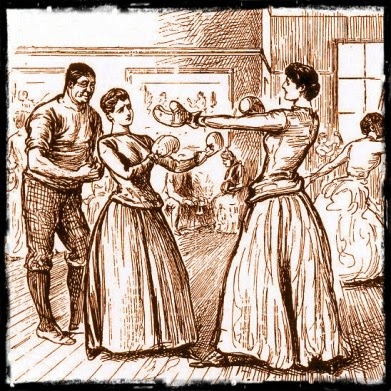A FIGHT CARD SHORT STORY WITH A TOUCH OF ROMANCE ... ONLY 99¢ ...
FIGHT CARD ROMANCE: LADIES NIGHT CHRISTMAS
Christmas, 1955 … Hollywood Legion Stadium …
Light heavy-weight champ, Jimmy Doherty is boxing Carlo ‘Toro’ Bassani for the Christmas benefit, even though Jimmy is sure Toro is under the thumb of gangster, Mickey Cohen. He doesn't know if Toro will deck him with a ‘Sunday punch’ in the first round or flop in the third. Even though Jimmy feels sorry for the pug who has cast his lot with the devil, he isn’t sure if he should give this boxer an early Christmas gift of his self-respect, by forcing him to fight like a man, or let Toro kiss the canvas.
Jimmy's bride, Lindy Doherty, is front row center where she always is when he fights. Not many dames would stay in their man's corner consistently cheering him on. She's taking in the action and praying her husband won't get his head handed to him on a Christmas platter. While waiting to watch Jimmy duke it out in the center ring, she and her six month old son, Patrick, along with her two Precious Roses, meet the brightest star in the Hollywood Christmas sky.
Can Jimmy retain his light heavy-weight title and keep a fellow boxer from accidently ‘falling’ off the San Pedro Pier? And what is Lindy’s special Christmas gift for Jimmy?




















































